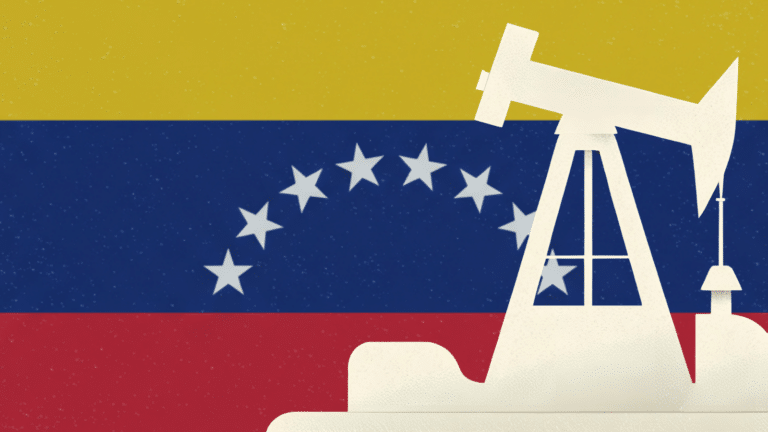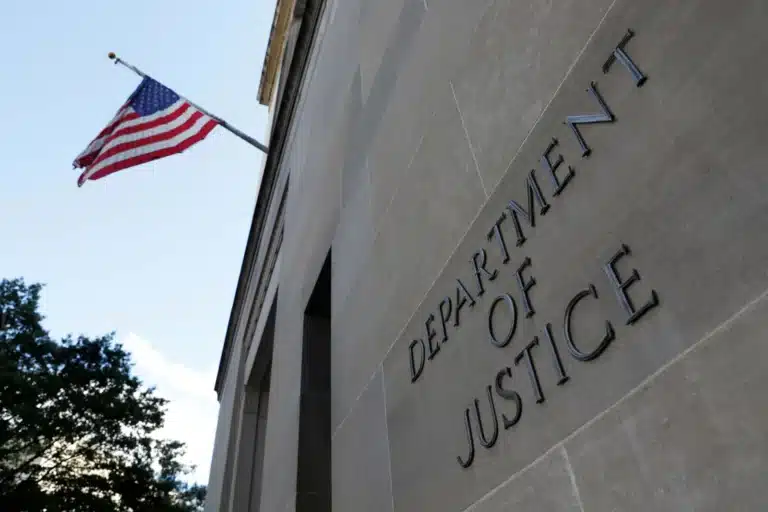Big banks predict catastrophic warming, with profit potential
Morgan Stanley, JPMorgan and an international banking group have quietly concluded that climate change will likely exceed the Paris Agreement's 2 degree
Current Access Level “I” – ID Only: CUID holders, alumni, and approved guests only
Commentary by Richard Nephew • November 19, 2015
The International Atomic Energy Agency issued its latest quarterly report on Iran’s nuclear program on Wednesday, November 18. Though the report is itself confidential and restricted to solely IAEA member state governments until released formally by the Board of Governors, it found its way to the internet as it almost always does and has shed some light on the pace and progress of Iran’s implementation of its nuclear commitments under the Joint Comprehensive Plan of Action (JCPOA). This post will offer a few thoughts on how far Iran has come and how far it has yet to go, and speculates as to when formal “Implementation Day” – the day when sanctions relief begins and Iran is free to add significant volumes of oil to the market — will occur.
Technical Steps
The JCPOA has usefully laid out a punch-list of the things that Iran must do in order for Implementation Day to be formally triggered and for sanctions relief to become effective. The list itself can be found in Annex V of the JCPOA and is very technical, but its most notable elements can be summarized as the following:
The latest report makes clear that Iran has made progress in the removal of its excess centrifuge capacity. The report indicates that Iran has uninstalled a little more than 4,500 centrifuges at Natanz and Fordow in around a month’s time. As other observers have noted, this reflects an uninstallation timetable of around 147 centrifuges per day at Natanz, at least of the older IR-1 type (the number of more advanced IR-2 centrifuges removed is far smaller, though they also have less far to go. So far Iran has removed 160 IR-2 centrifuges, but only had a little more than 1,000 IR-2 centrifuges installed at Natanz when they started). This is important because this work is the most time consuming element of Iran’s nuclear commitments. Had the report indicated that Tehran was stalling on this point, it would have called into question Iran’s willingness to bring the deal into force soon.
But, Iran’s pace of removal activities may give an incorrect impression of how fast they really can go going forward. For instance, Iran may have simply started with those centrifuges that are easiest to remove. Prior to the JCPOA, Iran had 15,420 IR-1 centrifuges installed at Natanz. But, only around 9,000 of those centrifuges were actually enriching uranium. A further 6,000 centrifuges were not yet operational. Dismantling those centrifuges would be a bit easier an undertaking and therefore the time to complete this part of the project could be a bit less. Iran’s Ambassador to the IAEA, Reza Najafi, admitted as such in an interview, where he said that the centrifuges that had been removed were those that had been inactive for years.
Even assuming that the rate of around 147 centrifuges removed per day were to be maintained, this still would support a projection of 2.5-3 months for total centrifuge removal and storage, setting the completion date of this part of the project to early-to-mid January 2016. It could, conceivably, be sped up, but probably only at risk to the centrifuges themselves. Logically, the Iranians would not wish to risk damaging those machines be placed into storage, as they are Iran’s leverage in the event that it detects backsliding on the part of the United States or its partners in the implementation of the JCPOA, and this creates some incentive for the Iranians to be far more careful, particularly with centrifuges that have actually been enriching uranium for years.
The report offers a few indications that Iran has taken the necessary steps to complete the remaining items on its list, mostly insofar as the Iranian uranium stockpile is concerned. For example, the report notes that the Iranians are processing their various remaining uranium and scrap uranium stockpiles to make them either easier for export or rendered unusable. Likewise, the report notes that Iran and the IAEA are working together to prepare for the implementation of the required transparency steps starting on Implementation Day. But, other key steps – such as the removal of the Arak reactor’s calandria – remain undone.
Political Chess
This is where politics plays a part. Though the Supreme Leader of Iran announced his support for the JCPOA in October, there remain uncertainties about the overall support of the Iranian system.
Of course, Iranian President Rouhani, Foreign Minister Zarif, and those in the economic ministries have vested interests in getting the JCPOA implemented as swiftly as possible. Many commentators have noted that, for Rouhani in particular, getting the JCPOA implemented before the late February parliamentary elections in Iran would be advantageous for building a stronger popular mandate for his policies. That said, it is also true that, given the vetting that comes with political candidacy in Iran, the outcome of the elections could be swayed to some degree in the favor of hardliners even if the JCPOA were fully in force.
The bigger issue is the content of the JCPOA itself and what it might mean for the ever-present culture wars inside of Iran. It is no secret that there are those in Iran who believe that greater integration with the outside world will, ultimately, be the downfall of the regime. The Supreme Leader himself has spoken of the risk of “infiltration” as a result of the JCPOA and reports of increased oppression in Iran have become common. The arrest of Siamak Namazi, an Iranian-American, has been broadly interpreted as an attempt to both complicate the lives of Rouhani and Zarif, as well as to demonstrate that Iran remains closed to interference from the outside.
The root of this hardliner concern is the mistrust that the Iranian government still feels for the United States and extreme reluctance to place itself in a position of relative weakness insofar as the United States is concerned. The ongoing steps that Iran is taking on its nuclear program play directly into this fear. The simple reality that Iran must take physical, time-consuming steps to remove nuclear infrastructure from use introduces a disproportional risk that the United States will renege at the last moment.
In response, the Supreme Leader has decreed that the modification of the Arak reactor and export of Iran’s enriched uranium stockpile cannot be completed until such time as a satisfactory resolution has been reached on the issue of the IAEA’s investigation into the past, possible military dimension (PMD) of Iran’s nuclear program. Pursuant to a roadmap adopted by Iran and the IAEA on July 14, this is to come in the form of a report by the IAEA on December 15, in which the IAEA will outline its conclusions on the PMD file. Beyond the natural time lag now created with respect to completion of the Arak and enriched uranium commitments in the JCPOA (which, together, probably require 3-4 weeks), this also introduces new political uncertainty into the implementation of the JCPOA altogether.
This is because the Supreme Leader’s decree suggests that the only resolution of the PMD file that he will deem satisfactory is one in which both past and future issues relating to Iran’s potential pursuit of nuclear weapons are cleared up. This is, frankly, impossible. No country without nuclear weapons but possessing a nuclear fuel cycle can ever be credibly judged by the IAEA to be a permanent non-risk. In fact, given its history and refusal to offer a confession of its past misdeeds, Iran is far more likely to be suspect of such activities in the future than any other country. This is why the JCPOA contains provisions restricting Iran’s development of technologies that could contribute to nuclear weapons, in addition to intensive restrictions and intrusive transparency steps. Moreover, though PMD itself could be potentially closed as an issue – meaning that the IAEA determines that it has learned as much as it will about the matter of PMD – the IAEA as a matter of course will continue to work to understand the full nature of Iran’s past, present and future nuclear program in its implementation of the Additional Protocol. Simply put, there is no way that the IAEA can credibly offer Iran any assurances about its future inspections work, nor should it.
This is a potentially big problem for the JCPOA if the Iranians stick to a rigid interpretation of the Supreme Leader’s words. As I have written about elsewhere, this has fortunately not been necessary in the past. But, it remains a potential land-mine for the implementation of the JCPOA. Even if Iran were to agree, grudgingly, to accept the IAEA’s forthcoming report as sufficient, the delay required to make a decision in this regard could push Implementation Day further back, making technical possibilities once again subservient to political debate.
Bounding our optimism
The IAEA’s report does not offer any analytical justification to claim with certainty that Iran will complete its required steps by one date or another. The report allows us to analyze how far they’ve come and to understand what more must be done, but the ball remains firmly in Iran’s court as to how fast – or how slowly – they will proceed. On Adoption Day, the United States and the EU fulfilled their commitments with respect to sanctions relief and, though the U.S. process for developing the implementing regulations continues behind closed doors, there are no indications that formal, legal sanctions relief cannot take place whenever Iran fulfills its part (when Iran actually derives economic benefit being a separate matter). But, as noted, both technical challenges and political concerns remain for Iran in reaching Implementation Day.
Realistically, it is reasonable to conclude that, if all continues on track and there are no political disruptions, it is possible that Implementation Day could occur as soon as early-to-mid January 2016. But, there remains a very valid case to be made that it will be delayed until February, if not later. Ultimately, for the United States, it really does not matter when Implementation Day is reached, as many U.S. officials have noted since the JCPOA negotiations ended in July, so long as it is.
***
*Richard Nephew is Director of the Economic Statecraft, Sanctions, and Energy Markets program at Columbia University’s Center on Global Energy Policy, and the former Deputy Coordinator for Sanctions Policy at the State Department. The views expressed are his own.
Steps by the second Trump administration show it is taking a tougher stance against the regime of Nicolas Maduro. Trump recently issued an executive order that could levy a 25...

Trump’s abandonment of antibribery efforts will hurt—not help—U.S. companies.

As Indian Prime Minister Narendra Modi makes his first visit to Washington in the second Trump administration, energy will likely take a front seat in United States-India relations. Due to...

Full report
Commentary by Richard Nephew • November 19, 2015